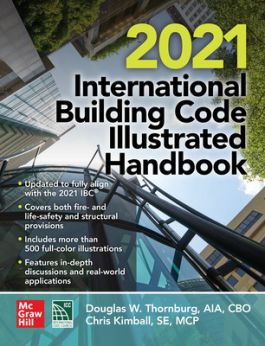1504.5 Edge securement for low-slope roofs. Low-slope membrane roof system metal edge securement, except gutters, shall be designed and installed for wind loads in accordance with Chapter 16 and tested for resistance in accordance with ANSI/SPRI ES-1, except the basic wind speed shall be determined from Figure 1609.
Code Interpretation:
The intent of the code is to ensure that the design and installation of roof edge metals and copings meet specific criteria including material specifications, wind resistance of the edge metal and the structural integrity of the substrate that anchors the edge metal, i.e. nailers, etc. The key elements considered in determining the loads on the roof edge are:
• Wind speed
• Occupancy
• Building height
• Location of the edge material
• Building location
There are three test methods required under ANSI/SPRI ES-1. They are:
• RE-1: Roof Edge Termination Test
• RE-2: Pull-Off Test for Metal Edge Flashing
• RE-3: Pull-Off Test for Metal Wall Coping
The metal system applied at roof edges and wall copings must pass these tests for ES-1 certification. The test methods as defined by the standard are completed in the following manners.
RE-1 tests the roof edge termination for mechanically attached and ballasted roofing systems. The RE-1 test evaluates the perimeter attachment to ensure that it meets a minimum holding power of 100 lbs/ft. The membrane is pulled at a 45-degree angle to the roof deck to stimulate a billowing membrane. Failure is defined as any event that allows the membrane to come free of the edge termination or the termination to come free.
RE-2 isa pull-off test for metal edge flashing. It evaluates the strength of the metal edge flashing to ensure that the fascia system meets or exceeds the buildings calculated design wind pressure. A load is applied to the fascia metal, stimulating wind load on the fascia. The calculation used is:
Force at failure x face = blow-off resistance
The results must meet or exceed the calculated design pressure of the building.
RE-3is a pull-off test for metal wall coping. It evaluates the strength of the metal coping cap to ensure that it meets or exceeds the building’s calculated design wind pressure. A load is applied to the coping cap, stimulating wind load. Simultaneous up and out forces are used. The calculations used to determine the blow-off resistance for the top, face leg and back leg are:
Force at failure x surface area = blow-off resistance
The results must meet or exceed the calculated design pressure of the building.
What Does the Code Mean?
For roofing contractors, the code eliminates shop (or field) fabrication of metal edge flashings and metal copings in municipalities that that have adopted ANSI/SPRI ES-1. (At this time, most states and many municipalities have adopted the code. Best practice is to check local codes for all projects.)
For designers it implies that perimeter edge calculations and wind engineering are required to determine the perimeter edge design pressure. Design of perimeter edge and metal copings should be in compliance with ANSI/SPRI ES-1.
For metal edge manufacturers the code requires approved testing and certification of all metal edge flashings and metal copings. Manufacturers that do not meet the compliance standards of ANSI/SPRI ES-1 will not be allowed on facilities in municipalities that have adopted the code.
The intent of the code is to reduce roof damage and limit associated human health and safety risks from high velocity wind events. The code provides a standard for metal fabrication, securement and attachment methods; the key factors in proper edge termination. These code changes will not eliminate all wind related roof damage, but they will greatly reduce damage initiated by improper attachment methods. The success rate of the code will ultimately be based on verification through enforcement.


